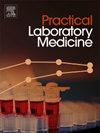External quality assessment for nucleic acid quantitative testing of human hepatitis B and hepatitis C virus in Chongqing, China: 2009–2024
IF 1.3
Q3 MEDICAL LABORATORY TECHNOLOGY
引用次数: 0
Abstract
Background
To achieve the goal of eliminating viral hepatitis as a public health threat by 2030, accurate detection of HBV-DNA and HCV-RNA is crucial. This study presents the implementation of HBV-DNA and HCV-RNA External Quality Assessment (EQA) programs conducted in Chongqing, China, from 2009 to 2024, highlighting the significant contributions made by clinical laboratories.
Methods
Over a span of 16 years, a total of 160 samples were distributed in the HBV-DNA EQA program, while the HCV-RNA EQA program disseminated 105 samples encompassing diverse concentration levels. Factors such as the number of participating laboratories, employed detection methodologies, utilized reagents, and test outcomes were evaluated to assess the HBV-DNA and HCV-RNA detection capabilities of clinical laboratories over the past decade.
Results
By 2024, the number of laboratories participating in HBV-DNA EQA activities had increased from 45 in 2009 to 110 in 2024, representing a 144.44 % increase. Similarly, the number of laboratories participating in HCV-RNA EQA activities had risen from 7 in 2014 to 30 in 2024, marking a 328.57 % increase. The accuracy rate for HBV-DNA EQA activity results improved from 85.37 % in 2009 to 98.18 % in 2024, while the accuracy rate for HCV-RNA EQA activity results rose from 66.67 % in 2014 to 96.67 % in 2024. Satisfactory reproducibility was observed in parallel samples. However, certain laboratories exhibited significant bias in low- and high-concentration samples.
Conclusion
The performance of laboratories in Chongqing, China, for HBV-DNA and HCV-RNA testing has consistently improved through their participation in EQA programs. In the future, sample distribution should include more challenging ones, particularly low- or high-concentration samples. Emphasis should also be placed on standardized operation and performance validation of the assay system.
重庆市乙型和丙型肝炎病毒核酸定量检测外部质量评价:2009-2024
为了实现到2030年消除作为公共卫生威胁的病毒性肝炎的目标,准确检测HBV-DNA和HCV-RNA至关重要。本研究介绍了2009年至2024年在中国重庆开展的HBV-DNA和HCV-RNA外部质量评估(EQA)项目的实施情况,重点介绍了临床实验室的重要贡献。方法在16年的时间里,HBV-DNA EQA项目共分发了160份样本,HCV-RNA EQA项目分发了105份不同浓度水平的样本。评估了参与实验室数量、采用的检测方法、使用的试剂和检测结果等因素,以评估过去十年临床实验室的HBV-DNA和HCV-RNA检测能力。结果到2024年,参与HBV-DNA EQA活动的实验室数量从2009年的45家增加到2024年的110家,增长了144.44%。同样,参与HCV-RNA EQA活动的实验室数量从2014年的7家增加到2024年的30家,增长了328.57%。HBV-DNA EQA检测结果的准确率由2009年的85.37%提高到2024年的98.18%,HCV-RNA EQA检测结果的准确率由2014年的66.67%提高到2024年的96.67%。在平行样品中观察到令人满意的再现性。然而,某些实验室在低浓度和高浓度样品中表现出明显的偏差。结论通过参与EQA项目,中国重庆实验室在HBV-DNA和HCV-RNA检测方面的表现不断提高。在未来,样品分布应该包括更具挑战性的,特别是低或高浓度的样品。重点还应放在分析系统的标准化操作和性能验证上。
本文章由计算机程序翻译,如有差异,请以英文原文为准。
求助全文
约1分钟内获得全文
求助全文
来源期刊

Practical Laboratory Medicine
Health Professions-Radiological and Ultrasound Technology
CiteScore
3.50
自引率
0.00%
发文量
40
审稿时长
7 weeks
期刊介绍:
Practical Laboratory Medicine is a high-quality, peer-reviewed, international open-access journal publishing original research, new methods and critical evaluations, case reports and short papers in the fields of clinical chemistry and laboratory medicine. The objective of the journal is to provide practical information of immediate relevance to workers in clinical laboratories. The primary scope of the journal covers clinical chemistry, hematology, molecular biology and genetics relevant to laboratory medicine, microbiology, immunology, therapeutic drug monitoring and toxicology, laboratory management and informatics. We welcome papers which describe critical evaluations of biomarkers and their role in the diagnosis and treatment of clinically significant disease, validation of commercial and in-house IVD methods, method comparisons, interference reports, the development of new reagents and reference materials, reference range studies and regulatory compliance reports. Manuscripts describing the development of new methods applicable to laboratory medicine (including point-of-care testing) are particularly encouraged, even if preliminary or small scale.
 求助内容:
求助内容: 应助结果提醒方式:
应助结果提醒方式:


